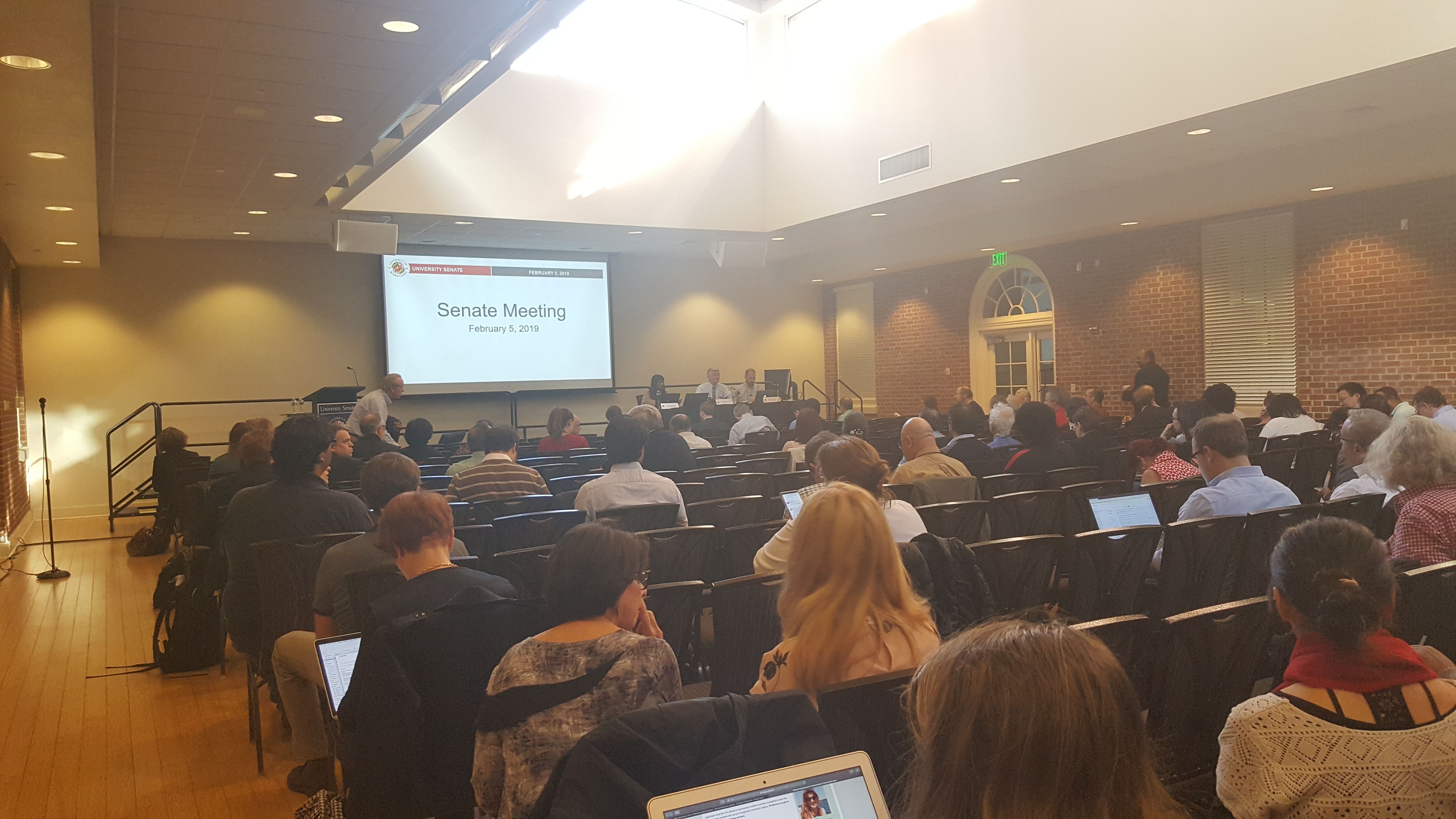At a University Senate presentation on sexual assault Feb. 5, architecture college representative Joshua Schmidt told an audience of mostly administrators and faculty that her experience with prevention programming on the campus had improved.
But when she stepped away from the microphone, she told a different story.
“People with the funding and policy-making power should be doing more,” said Schmidt, a junior architecture major. “You ask for 10 times more, and they might give you what you need.”
Amid concern from students like Schmidt, the Sexual Assault Prevention Committee and its partners will be releasing a sweeping marketing campaign this semester for sexual assault prevention that aims to convey a unifying message across the university.
[Read more: “This is a real issue”: UMD PSA holds open forum on sexual assault and harassment]
The committee is working to implement a university-wide marketing campaign, pushing “a campus culture that values respect and healthy relationships in all aspects of life,” said chair Julia Strange. The school’s Strategic Communications are consulting with students in focus groups before rolling out the campaign in April during sexual assault awareness month.
The campaign will include a new website with resources for students on how to identify, respond to, prevent and report conduct.
Elena LeVan, the assistant president for Preventing Sexual Assault, said she’s optimistic about the impact this campaign will make on campus. She hopes the messaging will focus on consent.
“For the most part, we all agree sexual assault is bad,” the sophomore psychology major said. “What we don’t always agree on is what constitutes sexual assault.”
[Read more: Here’s how Betsy DeVos wants to change guidelines for college sexual misconduct cases]
Since 2014, the Sexual Assault Prevention Committee has been ramping up the bystander intervention training called “Step UP!”
In the fall, the university’s CARE to Stop Violence office trained 4,084 students — 87 percent of incoming first-year students — through a series of 125 presentations. Students were trained in their UNIV100: The Student in the University classes, or equivalent courses, as well as in living and learning communities.
This is following an April 2017 recommendation from the Sexual Assault Prevention Task Force that bystander training be required for 100 percent of incoming students.
Additional sexual assault prevention measures are planned to go into place in the next three years, including mandatory online programming for second, third and fourth-year undergraduate students.
Junior aerospace engineering major Brandon Tsou had heavy in-person bystander intervention training through a program with his fraternity, Chi Phi. He said sexual assault prevention through any form of training should be encouraged, but the university should focus on in-person angles.
“Something more face-to-face is more effective than online,” said Tsou, who said he.
The program — an optional resource provided through the CARE office — is called Ten Man Plan. It consists of meetings once a week for nine weeks in which the chapter discusses issues such as building healthy relationships, the objectification of women in media and how to prevent sexual assault.
Brandon Ferrell, a junior computer science major and Chi Phi member, said it can be difficult to keep students’ attention with online programs. When they’re educated in person, there’s a higher chance the message will set in, and it also encourages more nuanced discussions than are possible with online training, Ferrell said.
“I think with the online stuff, everyone thinks, ‘Oh, it’s a university requirement, and I’ll just click through it as fast as I can,’” he said.
Strange said the committee hopes to give students different opportunities to interact with this issue by incorporating both online and in-person bystander response training.
“Depending on needs and capacity, using both methods can help disseminate information effectively with all members of the community,” Strange said in an email. “Offering both has the additional advantage of ensuring that all learning styles can be appropriately engaged.”
Schmidt said she doesn’t feel the university’s administration provides enough support on this issue, and that students have to take it upon themselves to move the needle on campus.
“It always seems like the most change happens when a bunch of students come together,” she said.



